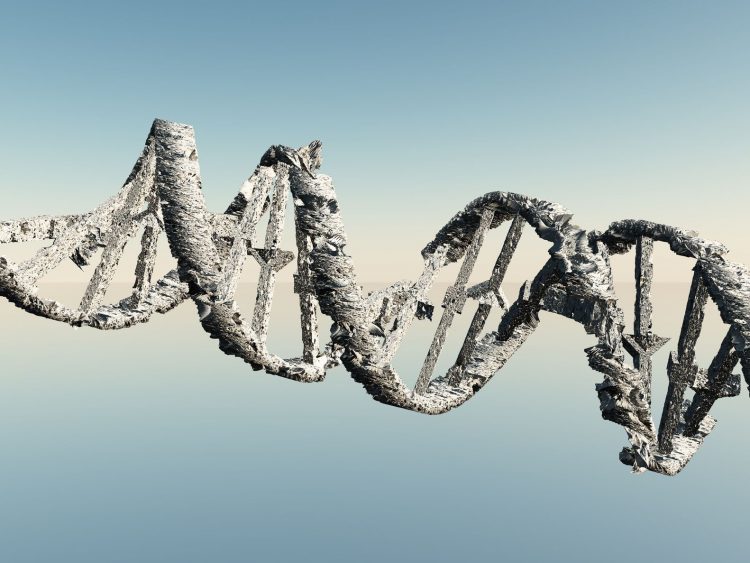Gene switch may repair DNA and prevent cancer

Damaged DNA Strands (Artist representation) Copyright : Bruce Rolff (123rf)
A team of scientists in Japan has found that a DNA modification called 5hmC – thought to be involved in turning genes on and off – localizes at sites of DNA damage and repair. They also found that a family of recently discovered enzymes, called TETs for short, is important in maintaining 5hmC’s reparative role.
To turn genes on or off, a methyl group can be added to or removed from DNA. During the removal of this chemical tag, called demethylation, the methyl group is converted to 5hmC as an intermediate step.
The TET enzymes are thought to be critical to the demethylation process. Recent research has shown that 5hmC is associated with an “opening up” of nearby chromatin, the tightly packaged assembly of proteins and DNA in the cell nucleus.
The team reveals in the journal Cell Reports that 5hmC localizes near breaks in DNA that develop naturally or that are caused by DNA-damaging drugs or irradiation. They also found that inhibiting TET enzymes in cells resulted in a lack of 5hmC, followed by errors in chromosome separation.
This suggests that TET enzymes are important for the production of 5hmC at DNA damage sites and that both play critical roles in responding to DNA damage.
The research raises the possibility that 5hmC helps to keep chromatin “open” so it can be more accessible to other DNA damage response proteins. 5hmC could be used as a marker for DNA damage, say the researchers.
“Our results imply that loss of TET enzymes and 5hmC depletion could contribute significantly to genome instability and inaccurate chromosome segregation, perhaps explaining the correlation of low 5hmC levels with cancer,” say the researchers.
For further information contact:
Peter Carlton
Institute for Integrated Cell-Material Sciences (iCeMS), Kyoto University
E-mail: pcarlton@icems.kyoto-u.ac.jp
Journal information
Cell Reports
Media Contact
All latest news from the category: Life Sciences and Chemistry
Articles and reports from the Life Sciences and chemistry area deal with applied and basic research into modern biology, chemistry and human medicine.
Valuable information can be found on a range of life sciences fields including bacteriology, biochemistry, bionics, bioinformatics, biophysics, biotechnology, genetics, geobotany, human biology, marine biology, microbiology, molecular biology, cellular biology, zoology, bioinorganic chemistry, microchemistry and environmental chemistry.
Newest articles

A universal framework for spatial biology
SpatialData is a freely accessible tool to unify and integrate data from different omics technologies accounting for spatial information, which can provide holistic insights into health and disease. Biological processes…

How complex biological processes arise
A $20 million grant from the U.S. National Science Foundation (NSF) will support the establishment and operation of the National Synthesis Center for Emergence in the Molecular and Cellular Sciences (NCEMS) at…

Airborne single-photon lidar system achieves high-resolution 3D imaging
Compact, low-power system opens doors for photon-efficient drone and satellite-based environmental monitoring and mapping. Researchers have developed a compact and lightweight single-photon airborne lidar system that can acquire high-resolution 3D…





















